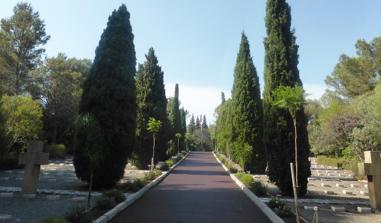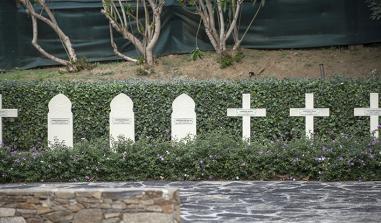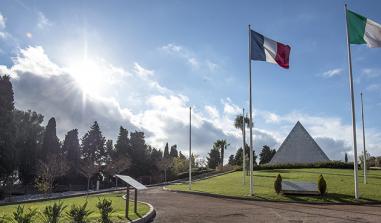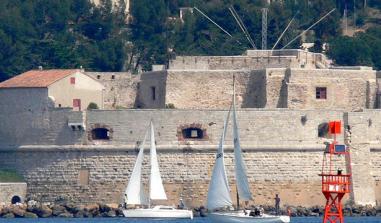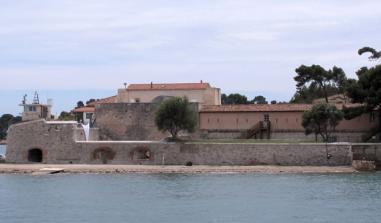Fort Saint-Louis in Toulon
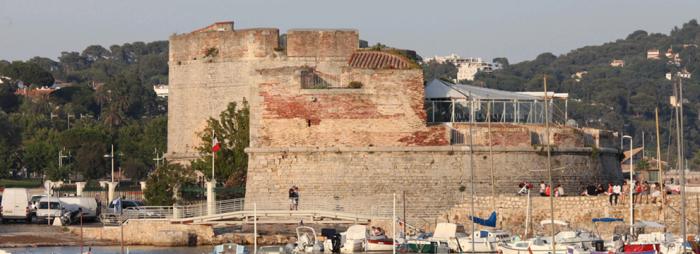
Le fort Saint-Louis à Toulon. Source : http://www.toulon.fr
The fort des Vignettes was destroyed in 1707. It would be rebuilt, almost identically, in 1708 under the name of fort Saint-Louis.
Following an inspection by Vauban in Toulon in 1679, the fort des Vignettes was constructed between 1692 and 1697 to prevent landings on the beach and keep any sailboats likely to try to drop anchor in the harbour at a distance. Destroyed in 1707, it was rebuilt, almost identically, in 1708 under the name of Fort Saint-Louis.
During the siege of 1707, the fort, under the command of Captain Daillon, was seized in an attack by Austro-Savoyard batteries positioned on the hills. After nine days, the state of ruin of the fort forced its defenders to retreat to the Great Tower (Royal Tower) after having set fire to the powder stores. The fort was rebuilt almost identically in 1708 under the name of Fort Saint-Louis. In 1743, it was armed with nine 24-pound canons. In 1847, it was armed with three 30-pound canons and three 22 cm howitzers, positioned behind an earth parapet encompassing the stone parapet. Developments in artillery led to the disarming of the fort at the end of the 19th century, as it was impossible to site large calibre canons there. It then housed an observation and command post for the detonation of the electrical mines that formed a barricade of the large harbour. It later became the headquarters of the officers' nautical club until 2001. It has appeared on the secondary list of historic monuments since 1948.
The fort is in the form of a semi-circular battery, whose gorge is closed by a casemated tower forming a redoubt and capable of bearing canons. Access to the fort is via an elevated gate, with a drawbridge in front. The aim of this device was to make invasion by foot soldiers difficult. Next to the entrance gate, a plaque affixed to the ramparts tells of the heroic conduct of the defenders of the fort in 1707. The plan of the battery is almost semi-circular. It is about fifty metres in diameter. Nine canon embrasures pierce the parapet, directed towards the sea. The embrasures are finished in brick so as not to splinter into dangerous shrapnel in the event of an enemy strike. In the middle of the 19th century, the parapet was incorporated into a solid earth parapet. It was returned to its original state during the 20th century. The back of the platform is protected by two walls forming a parados to mask the battery from blows from the land-side. The plan of the tower is asymmetrical. On the land-side, it is in the form of a flat bastion to flank the fort with parallel fire from the ramparts. On the coast-side, it is semi-circular so that artillery positioned on the terrace could comb a wide sector. The tower has two vaulted levels. The underground level held a water tank and a store. On the upper floor, a large vaulted chamber was used as accommodation for 24 men. You can still see the edge of the water tank. Access onto the terrace is via a spiral staircase.
Fort Saint Louis is not open to the public. This historic monument, managed by the Ministry of Defence, is covered by a Culture and Defence protocol signed on the 17th September 2005. Click here to see the list of other buildings...
Ministry of Defence General Secretariat for Administration Direction de la Mémoire, du Patrimoine et des Archives( Management of Remembrance, Heritage and Archives) 14 rue Saint-Dominique 00450 Armées E-mail: dmpa-sdace-bacm@sga.defense.gouv.fr Toulon Tourist Information Office Place Raimu 83000 Toulon
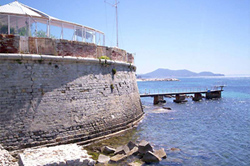
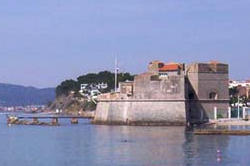
Le fort Saint-Louis vu de la plage - Toulon. Source : www.toulontourisme.com Le fort Saint-Louis à Toulon. Source : www.toulontourisme.com
Practical information
Littoral Frédéric Mistral 83000
Toulon
Tél. : 04 94 18 53 00
Le fort Saint Louis n'est pas ouvert au public.





